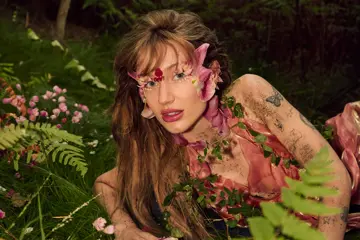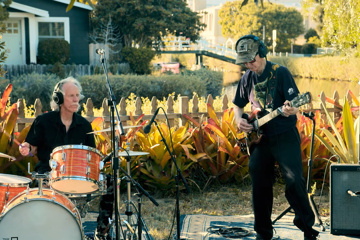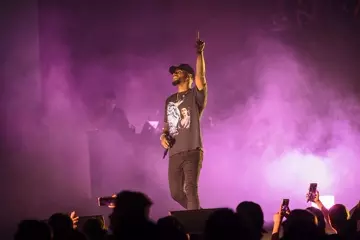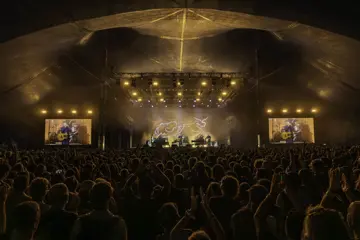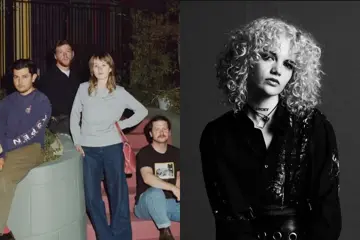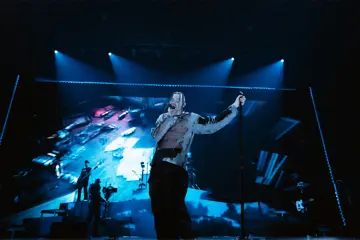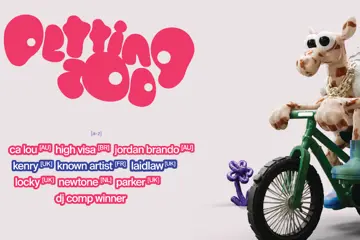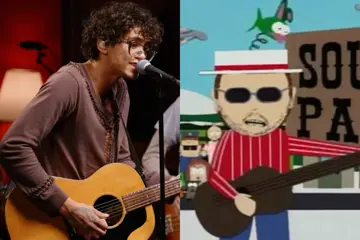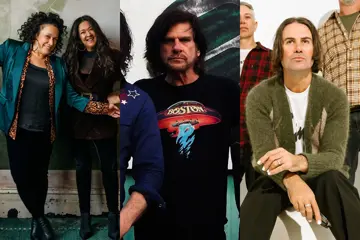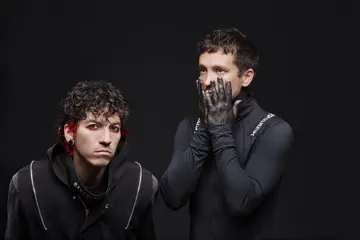Attendance rates at Australian live music events have surged to their highest level in four years, with many going to more events than before. But their behavior has changed thanks to COVID and now escalating living costs, which could create problems for artists and promoters.
This is from Big Ticket Items, the second annual state-of-play report from ticket marketplace Tixel and culture marketing agency Bolster Group. It spoke to 3,800 fans and execs from companies as Live Nation, Mushroom Group, Untitled Group, Secret Sounds, Oztix and RISING.
Tixel co-founder Jason Webb remarks, “This research is a huge undertaking. It helps us more deeply understand ticket buyers and is a much-needed resource as we continuously redefine and recreate how to get more people to live events in sustainable ways, and how we can continue to fuel a thriving live experiences industry.”
The Good News
The good news for the live sector is that 53 percent of Australians are going to more events and 59 percent see concerts as a priority now. Only one in ten have fear of catching COVID at these events, there are more international acts to get them off their sofas, and fans are making up for lost time.
Don't miss a beat with our FREE daily newsletter
Reasons for going to live music events include love of artists (96 percent compared to 92 percent twelve months ago), friends attending (43 percent vs 62 percent), desire for new experiences (31 percent vs 33 percent), friends’ recommendations (14 percent vs 18 percent) and confidence in the promoter or venue’s reputation (nine percent vs 18 percent).
But the bad news is they are spending less. “Consumer spending doesn’t match attendance and not all events are feeling this recovery evenly,” says the report. All ages are feeling affected by growing living costs. 61 percent of 18-to-24s, 58 percent of 25-to-30 year olds and 51 percent of 31-to-40s are “strongly” feeling the pinch. So promoters targeting the under-25s and over 45s can allow themselves a sigh of relief.
73 percent of respondents think tickets are too expensive, and 86 percent have reservations that prices should increase. But 78 percent still don’t see ticket prices as a reason for not shelling out for concerts and festivals. It was 76 percent in 2022.
Associated Costs
The major su-whoop is the associated costs of going to an event, including petrol, parking and accommodation. A whopping 51 percent admit this is a worry, compared to just 27 percent in 2022. More punters are using public transport, don’t have drinks and food at the venue, and opt for long drives home after the show rather than overnight stays in nearby hotels and motels.
In Big Ticket Items, Seth Clancy at Oztix says, “On premise, the F&B (food & beverage) sales aren't there. Instead of spending 40, 50 bucks on premises buying five or six beers, they’ll have a couple beforehand and then they might leave the venue earlier and have a few at home. That's ... the way the consumers have shifted in the last 12 to 18 months, particularly the younger Gen Z. Unfortunately they're going there less for the venue experience. They’re just there to see the artist and leave.”
Elsewhere F&B sales are down. “For venue managers, this trend spells trouble. Relying on bar sales to make up for dwindling ticket sales may not be a viable strategy going forward.”
For venues, raising ticket prices is tempting but not advised. Notes Clancy: “Price sensitivity is really critical. $1 to $2 can make the difference between 10 percent to 20 percent of ticket sales.”
Compared to last year, punters are prepared to put up with no more than a $4 rise to $71 for a local act in a bandroom, or $13 more for a single-day arts/music festival ($150), with a willingness for $170 for an international act in a stadium, or a $328 for a multi-day festival. The report warns, “These figures don't match a [six-to-seven] percent increase in inflation, let alone the 30+ percent increase in production costs that some organisers are reporting.” That’s not including the massive insurance hikes they face.
Tried And True?
Promoters say in the report that their job is made harder tossing whether fans want to stick with tried and true acts or experience something more novel. Some fans complain festival bills are looking and sounding samey.
Mushroom Group’s Matt Gudinski sums up: “Consumers spoiled for choice can afford to be more selective.” Of the uphill battle promoters face: “The landscape across the board is very challenging for emerging or new artists, especially on a domestic level. The leap from playing at venues like The Forum to larger stages like Margaret Court is a growing challenge.”
This struggle is especially felt by Australian and New Zealand artists. "A domestic artist who toured last year and hits the road again this year, even with a new album and show, might find that their fans are reallocating their dollars elsewhere, as they've already seen the artist,” relayed Untitled Group’s Mike Christidis.
FOSO (Fear Of Selling Out) is a stronger motivator than getting cheaper tickets in presales. A very high 96 percent reckon they can predict which shows will sell out. “When they get it wrong, they turn to resale – 71 percent of resale ticket purchases are made by people trying to attend sold-out events.” 66 percent are more likely to purchase tickets if they are confident they can resell.
What used to be a trend – of buying tickets later – is now a habit. 42 percent of respondents still like to buy early, but 20 percent of concertgoers and 33 percent of festivalgoers are buying later. It splits into genres. Pop fans are more likely to buy early. Ambient and experimental followers wait until the last moment.
More than 50 percent of people are still unmotivated to buy early when there’s a ‘Buy Now, Pay Later’ option, but there was a significant jump in the last 12 months in those saying it's attractive (from 27 percent to 38 percent).
Headache For Promoters
The headache for promoters, from the viewpoint of Mike Christidis at Untitled Group, is: "The cost it takes to produce the events is up by 20-30 percent or more. I can't pass that directly onto the ticket price; it would just make it non- feasible. So we had to kind of split the middle. We're taking a cut in our margins, but then also realising the consumers have got a threshold that they can pay.”
Matt Gudinski adds: "From an operator side, the cost of booking artists, delivering a show, and all the ins and outs associated with that are much higher than pre- pandemic, which is leading to higher ticket prices. Securing good workers and things like production equipment is very challenging, so that’s seen a rising cost, whether it be for stages, workers on site, or simply your audio systems and lighting rigs.”
Further insight from Seth Clancy is that “the ability to traverse our big brown land is still incredibly expensive. And that is translating directly through to ticket sales, which are more expensive than they were in 2019.”
Big Ticket Items points out, “These evolving financial dynamics underscore the complex challenges that event organisers must navigate as they strive to strike a balance between cost constraints and providing unforgettable experiences for attendees.”
It’s also in the stars, it reckons. “Virgos remain the most organised and conscientious (and love a comedy show), Aquarians love music, arts and theatre, and Scorpios proved themselves to be the dark horse that keeps you guessing.”


